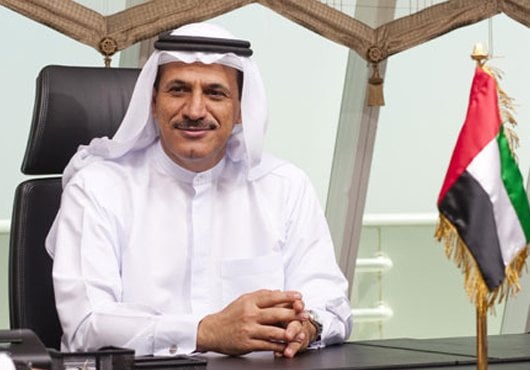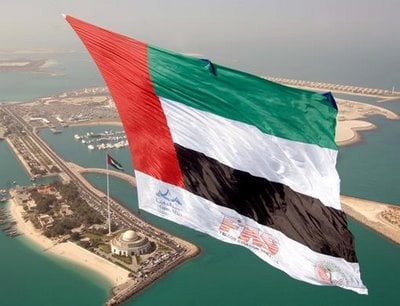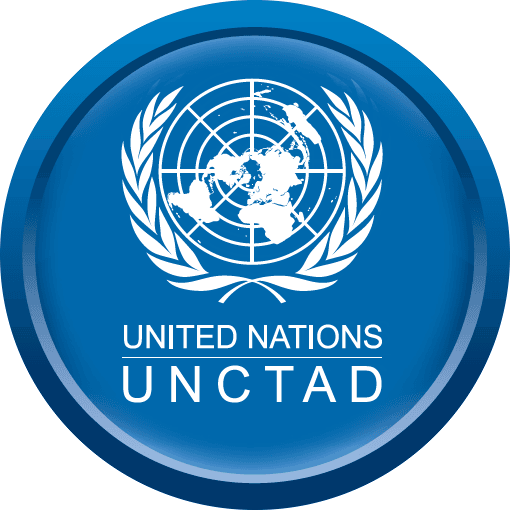Mehmood Ul Hassan Khan

Macro-economy of the United Arab Emirates is doing great at external accounts i.e. trade and foreign direct investments. UAE stands as a promising hub for investments and partnerships. Trade and FDIs play very important role in achieving goals of the macro-economy. Increase in trade provides strategic cushion in current account and earns foreign exchange reserves. Whereas, greater inflows of FDIs give you advantage over other. It creates employment. It supports joint venture activities. It facilitates Value-addition element in exports.
Due to UAE business and investment friendly policies it has become hub of investments and re-exports. Modern infrastructure, unrestricted flow of capital, exemption from taxes, full repatriation of capital and profits, in addition to full exemption of duties on capital and intermediate goods within the manufacturing industry are some key actors of its investment friendly policies. According to Economic Department, Abu Dhabi targets FDI as a key priority in its plans for next 20 years to raise it to 23 percent of GDP.
investment (FDI) in 2011. Last year, 328 projects were launched in the country with foreign capital, which represents an increase of 13 percent in comparison with 2010. Abu Dhabi plans to create a body that will work to increase foreign capital inflow as part of the emirate’s long-term strategy ‘Vision 2030’ targetting FDI of 23 per cent of its GDP. The Investment Promotion Agency (IPA) will be based in Abu Dhabi and will have offices around the world to explain investment opportunities in the emirate and attract capital, mainly in the industrial sector. According to Department of Economic Development (DED), Dubai attracted Dhs16.5bn in foreign direct investment (FDI) during the first six months of 2012. The first half of the year saw 115 FDI projects being initiated in Dubai by 113 companies, which accounted for 1.5 percent of total global FDI projects.
According to official data of UN Conference on Trade and Development (UNCTAD), UAE has attracted more than $76 billion in foreign direct investment since it was created 41 years ago to emerge as the second largest foreign capital destination in the Arab. The report showed cumulative FDI flow into the UAE has totalled $76.17 billion, nearly 12.6 per cent of the overall Arab FDI inflow of $603 billion. Moreover, the UAE also accounted for nearly 24 per cent of the FDI flow into the GCC and 0.4 per cent of the world’s direct capital. On the contrary, UAE as FDI outflow emerged as the largest capital exporter in the Arab region, pumping nearly $55.5 billion into global markets during 1990-2010.
Total FDI that flowed into Dubai during January-June 2012 was 7 percent up from the first half of 2011. The presence of larger projects is the most notable feature of the FDI inflow during H1 2012. Now more and more international companies are now convinced of the unique growth opportunities UAE provides as a regional hub and business centre. The rise in number of multinationals relocating to Abu Dhabi and Dubai and in FDI across key industry sectors in the emirate validates the vision of its
The sector-wise breakdown of new FDI initiatives shows Real Estate, Leisure and Entertainment; Chemicals; Financial Services; Business Services; Food and Tobacco; Healthcare; Communications; and Metals as leading FDI industries during the first half of 2012 in Abu Dhabi and Dubai. The top ten sectors together attracted 77 projects worth Dhs15bn, representing 67 percent of the total projects and 93 percent of the net capital invested.
The FCA initial statistics showed UAE non-oil foreign trade maintained positive growth rates in the first four months of this year rose by Dhs 17.3 billion to Dhs320.3 billion compared to Dhs303 billion in the period of comparison. It indicated that exports increased by 10 per cent from early January to late April this year, raising the UAE non-oil exports by Dhs18.4 billion from Dhs190.6 billion in 2011 to Dhs209 billion in the same period of this year. Moreover, the exports increased within the above period by 33 per cent from Dhs35.1 billion to Dhs46.9 billion, while re-exports hit Dhs64.4 billion in this period”, said the FCA. In terms of weight, the UAE total foreign trade hit about 31.8 million tonnes in 2012 January-April, including 17.5 million tonnes in imports; 11.2 million tonnes in exports and 3.1 million tons in re-export. The daily average weight of consignments (exported, imported and re-exported) processed by different customs outlets hit about 132 thousand tonnes per day (17 thousand tons per hour).
The FCA said in April alone, the UAE foreign trade hit about Dhs 81.8 billion, including Dhs52.7 billion in imports, Dhs12.5 billion in exports and Dhs16.6 billion in re-exports. Asia-Pacific region retained its first place among the UAE top non-oil foreign trade partners with a total trade of Dhs145.6 billion with the UAE 46 per cent of the total trade in the first four months. Europe came in the second place with Dhs 80.2 billion (25 percent) of the total trade followed by Middle East and North Africa with Dhs 43.4 billion (14 percent, America and the Caribbean with Dhs 28 billion (9 percent), Western and Central Africa region with Dhs9.2 billion (2.9 percent) and COMESA with Dhs 8.3 billion (2.6 percent).
The total of UAE non-oil foreign trade with the Gulf Council Countries (GCC) hit Dhs 26 billion in the first four months of this year. This total consisted of Dhs9.3 billion in imports, Dhs 7 billion in exports and Dhs 9.7 billion in re-exports.
The UAE total foreign trade with Arab countries hit about Dhs 44.5 billion in 2012 January-April. This total is divided into Dhs19.5 billion in imports” Dhs10 billion in exports and Dhs15 billion in re-exports.
According to the initial statistics in this period showed that gold came at the top of the imported goods with Dhs35.7 billion, followed by diamond with Dhs15 billion, cars with Dhs12.5 billion and jewelry with Dhs10 billion. Gold was the top among exported goods with Dhs24.4 billion, followed by polyethylene and propylene polymers in crude forms with Dhs 4.7 billion, jewels and pieces of jewelry with Dhs1.5 billion and petroleum and other oils with Dhs1.1 billion. UAE’s non-oil trade grows to Dhs320.3b. According to official data of Kuwaiti-based Inter-Arab Investment Guarantee Corporation (IAIGC), exports and imports by the UAE, the second largest Arab economy, totalled around $490.5 billion in 2011, accounting for nearly 24.3 per cent of the overall Arab commercial exchange of about $2,013 billion, showed the figures by the imports were estimated at around $205 billion last year, the highest in the Arab region, while exports stood at $285 billion, the second largest after Saudi Arabia. The report by the World Trade Organization showed the UAE accounted for nearly 1.1 per cent of the world’s total imports of goods of around $15.37 trillion and 1.5 per cent of the global exports of $15.23 trillion.
Conclusion
UAE is now one of the ideal destinations for all the regional and international companies and brands. Its business and investment friendly policies have geared-up the inflows of FDIs in the country which has also accelerated trade and commerce activities. Regional continued political uncertainty and ongoing global economic recession could not affect UAE macro-economy. Prospects are bright for trade and FDIs in the UAE in the future because its infrastructure, ideal law and order situation, and all the supporting actors are always there to facilitate the process of trade and FDIs. Moreover, continued economic liberalization, and reforms are the key factors for greater trade and FDIs


